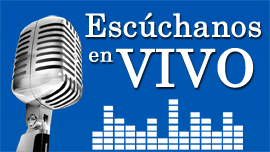
Donald Trump, has expressed his intention for Washington to regain control of the Panama Canal. Image: CNN Spanish
by María Josefina Arce
The signing of a Memorandum of Understanding on security between Panama and the United States early last month has generated rejection from various sectors of the Isthmic country, especially when U.S. President Donald Trump has expressed his intention for Washington to regain control of the Panama Canal.
Political parties, experts, institutions such as the University of Panama and the general population have described the text as harmful to the sovereignty of the nation.
In recent days, political leaders and members of civil society have signed a document demanding that the government of President José Raúl Mulino rescind the memorandum and that any agreement related to the interoceanic waterway that modifies or exceeds the
neutrality regime must go through the National Assembly and a referendum, as established by the Panamanian Constitution.
Although the authorities have insisted that the agreement with the United States does not violate Panamanian sovereignty, there are many doubts about its real scope, given the pressure from the U.S. government, which, as the news agency Prensa Latina points out, has also developed a whole campaign about alleged Chinese interference in the canal.
Experts point out that the memorandum legitimizes the US military presence in Panama, returning to old patterns of subordination and dependence.
While prioritizing the transit of U.S. military vessels through the interoceanic waterway with certain advantages, it reinstates the rotating presence of U.S. troops in former bases of the Central American nation.
This is a sensitive issue that has revived the decades-long struggle of the Panamanian people to regain sovereignty over the canal, which was finally returned to Panama in 1999 after the signing of the Torrijos-Carter Treaties in 1977.
Many remember that the Canal Zone, controlled by Washington since 1903, was a U.S. colony within Panamanian territory, with its own administration, laws, police, schools and hospitals.
Panamanians could not move freely through that part of their territory where the U.S. flag flew.
An important part of Panamanian society questions the signing of agreements that threaten sovereignty without the consent or prior knowledge of the population.
For many, the control of the Panama Canal by the United States for almost a century is a sad memory and evidence of U.S. interference in Latin America and the Caribbean, a threat that is more than present in the region.

